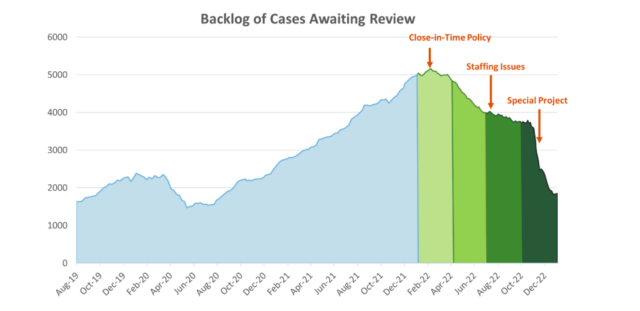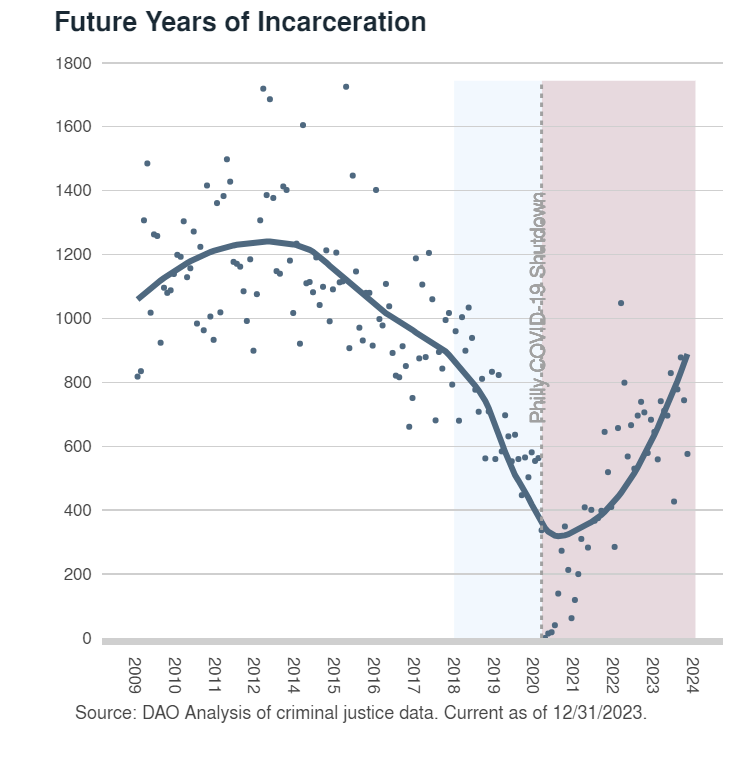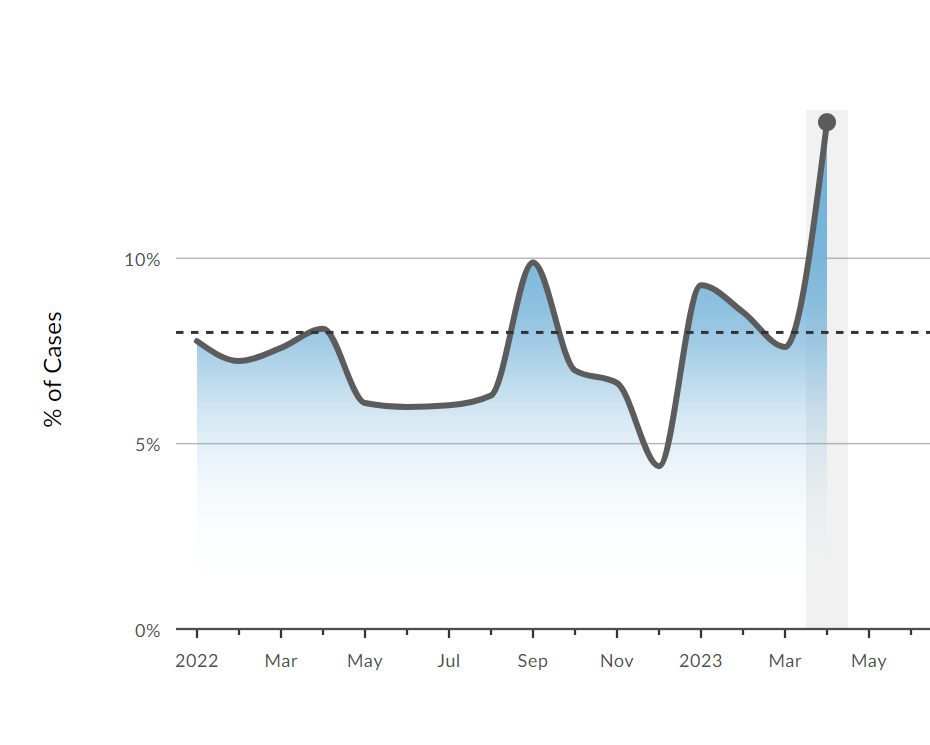The Landscape
There are more than 2,300 prosecutors’ offices in the United States, which includes city attorney offices. Prosecutors are key players in local criminal legal systems and have the power to impact rates of incarceration. A key role of prosecutors is to make decisions about who gets charged with what crime and when. While conviction rates are a common metric of success, prosecutors are also looking at additional performance metrics to inform systems change.
According to research from the Association of Prosecuting Attorneys (APA) (presented at the National Prosecutorial Summit on Data Transparency and the Use of Data Dashboards), many offices are using outdated data management systems that are up to 30 years old. These offices may lack the tools to report on the number of cases handled, who is being charged, the case outcomes, and/or racial disparities. However, several prosecutors’ offices are making strides in their efforts to use data to safely reduce both crime and incarceration in their jurisdictions.
Accurate and transparent data is necessary to ensure that prosecutors are achieving their goals of making communities safer. Putting residents in jail before trial can be costly, and research shows it can also lead to more crime. In fact, 62 percent of people sitting in jails across the country are pretrial (and therefore presumed innocent), and 75 percent of people in jail are there for nonviolent offenses.
Source: Safety and Justice Challenge
City Examples: Seattle
Using a promising data management strategy, Seattle’s prosecutor’s office uses data to reduce the number of police referrals for misdemeanors and the number of cases they need to review. The Seattle City Attorney’s Office successfully cut its backlog of cases awaiting review by 60% after implementing a new data management system to identify potential problems. The office publishes the data analysis of their policies in quarterly and annual reports.
One of the policies the office utilized focused attention on “high-utilizers” (individuals who have multiple cases within three years). This focused attention included a faster review of cases, faster-charging decisions, significant coordination with Seattle Police to take action on open warrants, increased coordination with the King County Prosecutor’s Office on resolving felony cases, collaboration with service providers where appropriate, and a special exception to book “high-utilizers” misdemeanor defendants into King County Jail. The office analyzed its data to identify the 168 individuals who have been collectively responsible for more than 3,500 misdemeanor referrals to the City Attorney’s Office since 2017. The City Attorney’s Office estimated that the initiative was able to prevent 750 police referrals in the first year (12% of their total caseload). The close-in-time filing policy also reduced the median time to make a filing decision from 96 days in 2021 to 5 days in 2022.

Backlog of cases awaiting review: The backlog went down from more than 5,000 cases at the beginning of 2021 to under 2,000 by the end of 2022.
In other cities with robust crisis response systems, high-utilizers are more effectively deflected and connected with resources to prevent incarceration for non-violent offenses.
City Examples: Philadelphia

Future Years of Incarceration: Philadelphia had 8,325 future years of incarceration for 2023, rebounding from a low of 2,563 during the COVID-19 pandemic.
Philadelphia is another city where the District Attorney’s Office (DAO) is using data to inform its policy decisions to make the community safer. From 2018 to 2021, The Philadelphia District Attorney’s Office was able to cut the jail population by 40%, reduce the time people will spend in prison by 18,000 years, and have record high conviction rates for homicide and shooting cases. One of the first steps in their jail reduction strategy was analyzing data to identify racial and ethnic disparities across all decision points. The findings were later published in the 2023 Racial Injustice Report.
Philadelphia’s public prosecutorial dashboard is maintained by the District Attorney’s Transparency Analytics (DATA) Lab. The DATA Lab is an interdisciplinary team of criminologists, lawyers, data analysts, GIS analysts, and researchers. The lab is unique among prosecutors’ offices nationwide. It undertakes original research, collects and analyzes data to inform DAO policies, and measures outcomes. The team serves as a model for prosecutorial offices and data dashboards nationwide.

City Examples: Baton Rouge
The East Baton Rouge District Attorney’s Office (EBRDA) uses Commons (in partnership with Measures for Justice), a community-driven data tool that shapes criminal justice policy. Other jurisdictions using Commons include Monroe County, NY, and Yolo County, CA.
“We are dedicated to forming partnerships to ensure public safety while providing appropriate individuals the chance to address their criminal behavior without the stigma of a criminal conviction. Based on suggestions from the EBRDA Community Advisory Board, we will expand our service providers to better serve the needs of participants facing economic hardships. These collaborations will provide tailored rehabilitative programming and resources to defendants while making victims of crime whole. Today, we divert 7% of cases on average every month.” – Hillar Moore, District Attorney, East Baton Rouge Parish, LA.

Cases Diverted – April 2023: ERBDA set the goal to maintain pretrial diversions at or above 8% by December 2024.
By reviewing data on pretrial diversions, the office identified diversion program eligibility restrictions that were not increasing public safety and were contributing to racial disparities. As of April 2023, pretrial diversions increased to 13.67 percent.
Using Data and Dashboards to Inform Systems Change
There is still work to do in the use of data to reduce unnecessary incarceration across the United States, but many prosecutors across the country are taking the first step in their efforts to analyze local data and create public dashboards. Using data to inform policy can lead to reductions in racial disparities, case backlogs, and jail populations, all while increasing diversion. Prosecutors can use data to identify and connect individuals with the services they need to reduce costly and unnecessary involvement with the justice system.
Public-Facing Dashboards and Data Efforts
Cook County
Jackson County
King County
Maricopa County
New York County (Manhattan)
Measures of
Justice
Milwaukee
County
Philadelphia
County
San Fransisco County
Yolo
County
Prosecutorial Performance Indicators
Jacksonville
Florida 4th Judicial Circuit State Attorney’s Office
Tampa
Florida 13th Judicial Circuit State Attorney’s Office
Tableau Foundation
Source: National Prosecutorial Dashboards: Lessons Learned, Themes, and Categories for Consideration
Take Action Now!
Prosecutors across the country are in the position to use their local data to safely decrease incarceration and racial and economic inequity in the criminal legal system. As city prosecutors adopt data-driven practices, they can be responsive to community needs. For prosecutors looking to adopt transparent policies, APA has released guidelines for offices interested in publishing public prosecutorial dashboards.








